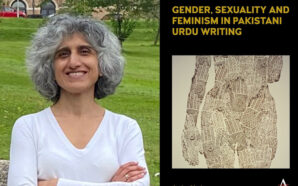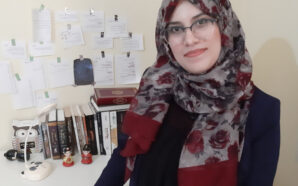 All around us are people who need help, but not everyone believes they can be of help, or are capable of making a difference even in just one stranger’s life. And while the boxes we slowly build around us as we go through life perfectly serve their purpose of boxing us in, the people behind KiteChild think differently.
All around us are people who need help, but not everyone believes they can be of help, or are capable of making a difference even in just one stranger’s life. And while the boxes we slowly build around us as we go through life perfectly serve their purpose of boxing us in, the people behind KiteChild think differently.
Through the lenses of KiteChild, we see the beauty in giving children the chance to live, well, as they should, as children empowered to realize their full potential.
Why Kitechild?
Kitechild started back in 2009. I was approached by a friend I met while we were both in college in UCLA regarding her idea of helping children in orphanages. I already had an extensive background in working with NGOs, and I was interested in social good, but I just didn’t know how to start. My co-founder, Pollyanna Salas-Uruena (Polly), grew up with missionary parents that traveled the world visiting orphanages. She saw how children were living in terrible conditions, neglected, malnourished, with limited education – memories of which stayed with her all of her life.
For me, personally, I had a situation where, all of a sudden, I had to become a foster parent to my little brother, and it really made me see the importance of giving support to vulnerable children. So when we both graduated in 2008, we made a decision to start something. In 2009, we secured funding for the organization and started from there.
The name KiteChild is based on the analogy of flying a kite which is basically the same as raising children. When you think about flying a kite, there’s a lot of effort that goes into getting it running off the ground. But once you do that, once it’s up in the air, it totally takes off on its own, and it’s a beautiful thing.
How were you able to start it up?

KiteChild in Kenya: Our families, on the other hand, have always been very emotionally supportive and encouraging of our work.
We were able to secure funding to begin research back in 2009. We spent three years researching, traveling to different countries and executing pilot projects to test out our model. We spent a lot of time seeing what was out there, identifying whom we could partner with, and seeing what the needs were in each country, and finding ways to address those needs.
We got a lot of support from our friends who would always pitch in and donate their time and expertise, which, as a startup, we valued just as much, if not more, as if they had contributed funding. We got guidance from professionals for basic things like accounting to legal stuff to website stuff… everything really quite instrumental for any startup, especially for one like ours with a very limited budget.
Our families, on the other hand, have always been very emotionally supportive and encouraging of our work.
Which countries did you target initially?
We researched countries that we saw had a more serious need and more serious problems in terms of children living in orphanages. These countries that we work in (Kenya, India and Honduras) do not have established or even functional social welfare programs which support families, or process foster care adoptions.
Oftentimes, the only resort for children who are true orphans is to go live in an orphanage. And because there is no social welfare for families living in poverty, meaning no assistance, no help, mothers will often send their children to go live in an orphanage because they know that by living there, these children will be clothed; they’ll be fed and they’ll be sent to school.
In these orphanages, about 95% of the children living there have parents that are living. These parents just mainly cannot afford to take care of them due to poverty… and in some cases, cannot take care of them because of abuse or violence in their home.
The police will go to the home and take the child away, but will then proceed to take them to the nearest orphanage. There’s no system of registering in the government or keeping track of the children. Orphanages are used in that way by the government. Instead of them creating their own programs, they just make use of what’s out there.
There are an estimated 8 million children living in orphanages, and we at KiteChild really want to start helping those living there now just as other organizations are working on lobbying governments to introduce or revise policies to protect and uphold children’s rights, whether they be living with their families or orphaned in some way.
In India, for example, children over the age of 5 are not eligible for the country’s foster care program so all these older children go live in orphanages. HIV / AIDS is also still a big issue in that country, that is why children born with the condition are ostracized and outcast from the communities In response, several of our partner homes there care specifically for HIV-positive children. So, like I said, the issue is usually complicated and convoluted, and unique to each country. Therefore, we have made a conscious choice to operate in those countries in which there really are no alternatives for orphaned and vulnerable children at this time.
What are some of the obstacles you faced?

KiteChild in India: We obviously support other organizations working at addressing the root causes of displaced and vulnerable children. But as they do that, we are here to support the current generation of children who have no choice but to live in these shelters.
Getting the philanthropic community to understand our mission was really a major obstacle because there is so much negativity surrounding orphanages, and we totally get it – it’s not the ideal living situation for children. But when you go to these countries and realize there is no social support, no alternative but a life on the streets or trafficking or literally starving, you realize how great a need there is to work within the system (orphanages).
We obviously support other organizations working at addressing the root causes of displaced and vulnerable children. But as they do that, we are here to support the current generation of children who have no choice but to live in these shelters.
Other obstacles include identifying trustworthy partners and also getting them to trust us. KiteChild projects are based on transparency. We don’t just give cash… we implement a project, we see the outcome, see how the project’s doing, see how much income it’s generating, and then see where the proceeds are being used. There’s a lot of accountability, caring, relationship-building and negotiations involved. Our projects take time, and at least take a year to start seeing returns. It’s really a process that requires patience, commitment and dedication. But that’s exactly how we’ve overcome the obstacles of corruption and mistrust in orphanages.
“It takes a village to raise a child”
We believe in sustainability, we believe in transparency, and we believe in empowering local communities to take care of their children. It’s important for these children to see that they’re being cared for, not by some random person that they don’t even know from across the world. They’re being cared for by people from their community.
If a parent tells us: we have problems feeding our children, we can’t feed them enough or they’re eating only grains, they don’t have access to vegetables, they’re not healthy, they’re suffering from malnutrition, what we do is we work on a plan with them and come up with the infrastructure required to execute the plan.
One of our homes in Kenya, for example, has a greenhouse so they can provide better quality nutrition for the children. They have a chicken coop facility so children have adequate protein in their diet which is very important. They have clean water filters so that the children don’t get sick from the water, and also help them save money from having to buy water from the city. They use the fund to pay for the older children to go to school because that’s not free in Kenya, and they also use it to pay for a social worker.
So we are basically empowering the local communities to take care of their children and help them reintegrate into their communities. The activities are also designed to directly help the children themselves by instilling the value of self-reliance. They help out on the farm, they harvest vegetables from the greenhouse, they pick the eggs from the chicken coop… they get involved. In doing so, they realize that they’re not these charity cases where someone’s just going to be sending them money every month, that they actually have the power to be involved in shaping their future and providing for themselves.
The most satisfying aspect of being a part of KiteChild.

KiteChild in Honduras: We are basically empowering the local communities to take care of their children and help them reintegrate into their communities. It’s important for these children to see that they’re being cared for, not by some random person that they don’t even know from across the world.
I can only speak for myself because Polly is not here right now. For me, personally, KiteChild is like my baby. It’s really amazing to know that we managed to overcome so many challenges, and that we have been actually helping other people help themselves.
Even though we’re not out there in the field all the time, when we do get these photos and videos from our liaisons in the country, and they show our projects and our children… we see the tomatoes that are being grown, and the children in their uniforms going to school. These things make me really happy. I get this really cool feeling where I know what I am doing is totally worth it. It’s that wonderful feeling when I wake up every morning, and I feel excited to work.
Your message to our readers at Ananke.
Find something that really sparks you up from the get-go, something that really intrigues you, and something that you can’t stop thinking about. And whether that’s being involved in social good, becoming a writer or being a marketing leader or starting your own business or whatever it maybe, once you find that spark, you have to really want it and really go for it.
Website: KITECHILD
About the writer
Claire Dangalan is a Filipina freelance feature writer (a.k.a. Lovely Claire Cachuela) based in Dubai. She is a consummate lover of the arts, especially literature. She taught Cultural Anthropology, Sociology, Humanities and Literature back in the Philippines. Her interests, aside from writing, include the environment, health and fitness, culinary arts, social issues, studies on world view, and “unprofessional photography.”
To connect or read more from Claire:
Blog: Faeriequeenbuknoy
Blog: Enthymememy
Facebook: Reduce your CO2 footprint
Twitter: Alice Red Queen
Twitter: Red CO2 Footprint










